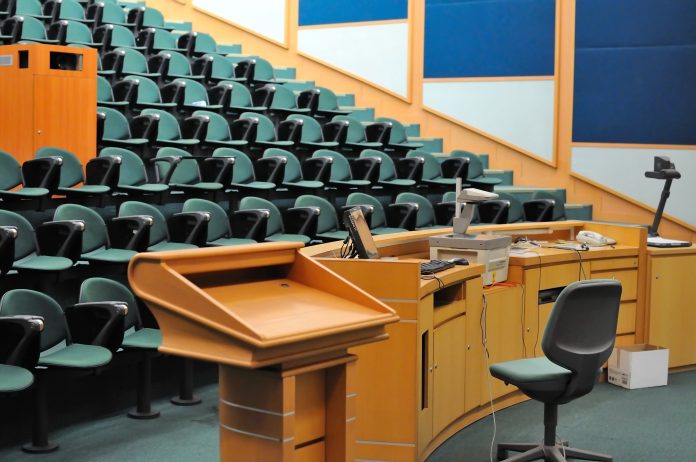Mark Paget Skelin, Partner at law firm Bevan Brittan LLP, explains his predictions concerning the appearance of the Higher Education estate in a post-COVID world
The Higher Education sector needs to adapt to the seismic changes to our society, education and working practices following COVID-19 as the impact the pandemic has called into question the traditional concept of many aspects of university life we have got used to over the last 50-60 years.
Many universities had expanded the size of their estate over recent years, in the drive to build better (and sometimes bigger) new facilities to attract students from both home and abroad in an ever more competitive market. However, an overnight shift from the office to working from home during COVID has made large amounts of university office space redundant, and although we are now starting to emerge into a new post-COVID world, there is little sign that people will return to using office space as they did before the pandemic.
Typically, over a third of a university’s estate has consisted of office space, either for academic staff or for administrative purposes, with the remainder used for a mix of general teaching, specialist teaching and informal learning. Now, as the workforce adapts well to home working, we are likely to see more agile working, desk-booking and greater amounts of personal space being altered or configured to a greater degree as we enter a post-COVID world.
Less existing office space
The reduction in existing office space at universities will be combined with the demise of purpose-built lecture theatres, as many lectures are likely to remain online in the future. However, this will be compensated to some extent by an increase in space for ‘collaborative learning’, where students will still come together to meet and collaborate regularly through peer-to-peer learning and tutorial support. These redesigned spaces could even extend to outdoor areas on campus which can be equipped with all-weather seating and electronic chalkboards.
The greater emphasis on wellbeing and health in a post-COVID world is already resulting in increased demand for more open space for sport, walking and breaks between classes on university campuses. Even so, several commentators are predicting an overall reduction in size for a typical university campus by around 30% in the future, resulting in a smaller campus but with higher quality facilities overall, and a higher proportion of open space.
The campus of the future will also be in a far better position to reduce its carbon footprint as older, less energy-efficient buildings become redundant and are either demolished, repurposed or sold. This will provide opportunities for universities to reprofile their estate if they are in a position to do so.
Empty space on high streets
The impact of COVID on the high street has been catastrophic, with many retailers having to close. Empty space on high streets and in shopping malls has sparked interest from several universities who would have been unable to compete in bidding with the previously high rental costs for this sort of estate, which should help to regenerate many of our city centres. For example, a University in the U.S. has already taken over a vacant shopping mall as part of its campus. In England, the University of Gloucestershire has recently purchased the old Debenhams department store in Gloucester to use as lecture halls and training spaces and the sale of a redundant department store in Oxford has attracted interest from the higher education sector.
Universities are also looking at how to extend the use of their remaining estate to the local community by allowing them to use meeting areas or other unused space for wider community or voluntary use. This could also expand to after school use by pupils who would otherwise be unable to access IT facilities for homework or revision purposes.
Opportunity for the Higher Education estate
Furthermore, there is an opportunity for many university campuses to repurpose their underutilised buildings to act as a bridge between a learning space and a workspace. This could allow start-up businesses, local enterprises and possibly even the NHS to use space within a campus or city centre building whilst collaborating with the students at the university. A concept that could lead to job and other career opportunities for students.
In summary, the Higher Education estate is likely to change significantly in a post-COVID world. The remaining estate will need to become more flexible and adaptive to further change, whilst underused parts of the estate will need to be repurposed or sold. However, the sector should beware of any knee jerk reactions and should think through carefully any plans to radically change its estate before it is certain as to what the long-term impact of those changes may involve.











